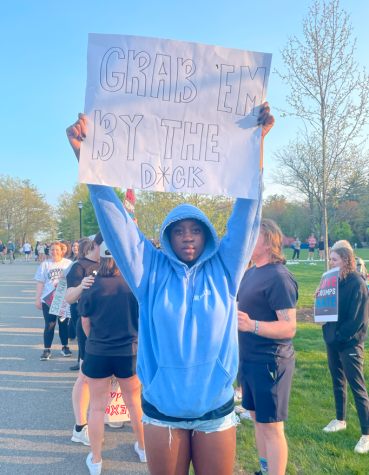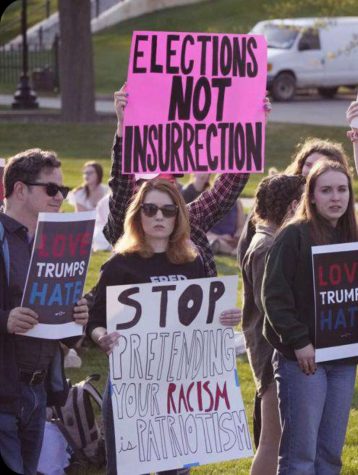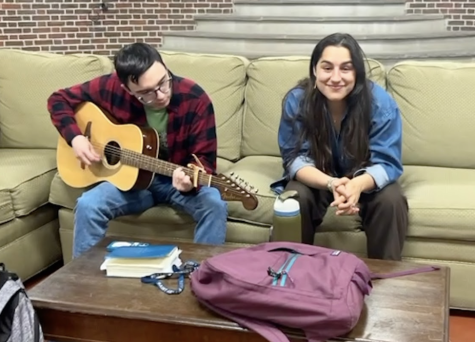Omnium Gatherum
Entries in the annual gingerbread competition are on display in Davison Hall, just one of the many holiday traditions here at SAC.
December 7, 2022
My favorite of the College’s Christmas traditions is the gingerbread competition. Like all good things, it requires perseverance; before Thanksgiving break, two or three hundred students camp outside Davison Hall to get a spot. They spend a freezing night wrapped in layers, sipping on hot coffee delivered by sympathetic roommates, and checking their phones, hoping that dawn will come sooner. It is, in some ways, an endurance test. After the one hundred spots are filled, the teams of four have a few weeks to plan. They are supplied with gingerbread, frosting, two hours time, and a few bags of candy. The entries range from common to creative, but the real competitors are the clever. No matter how well-decorated a gingerbread house might be, the jury is comprised of students, and we like references to SAC. Davison, C-Shop, Polio Pit, and Dirty Dom are all surefire bets. This goes to printing before the final results are announced. I bet I’m right.
Effective altruism (EA) and its recent headlines raise a good question: to what ought we to give? We ought to give, of course. Jesus and Jimmy Carter say so, and only weirdos like Bernie Sanders disagree. An obstacle, maybe, is deciding to which causes. Effective altruists think they have the answer. With a stolen Econ 102 textbook, they make arguments about return on investment, randomized trials, and marginal returns/utility. They claim that givers are obligated to give to causes where their donation will have the greatest measurable impact. Screw the historic society, and your alma mater certainly doesn’t need another red cent. Vaccines and the environment are the best bet for savvy do-gooders.
Why save one life if, with the same investment, you could save a dozen? It’s a good question that does not sit well with me. By any objective standard, effective altruists are right. It is better to save two lives than one, and philanthropists ought to do their due diligence on the track records of their chosen interventions. Still, this pseudo-economic reasoning has its foibles. For one, it does not allow for cultural charity. The world’s museums, concert halls, and public television would be much reduced without private largesse. Secondly, I will not concede that a donation to one’s local food pantry is any less worthwhile than one to UNICEF. Giving is valuable for its effect on the giver’s character rather than on anything measurable. Finally, a movement can be judged by its adherents much as a man can be by his friends. When I look at effective altruism I see futurists, crypto-bros, and pop philosophers: con-men, dilletantes, and fabulists. Magnificence is a virtue, EA reeks of vice.
Christmas music is the best, and I think I know why. Where other genres are addicted to the new, caroling draws upon centuries of tradition, English language carols were first written down in the 1400s. Most of the classics we still hum along to today were popularized in the 19th Century (“God Rest Ye Merry Gentlemen”, “Hark! The Harold Angels Sing”, and many more). How can country, hip-hop, or anything else hope to compete when anything older than one of Leonardo DiCaprio’s girlfriends gets no airtime?
Once and would-be president Donald Trump invited a white supremacist to eat dinner with him at his Florida home. I say invited, where others have balked at such clarity, because it is unfathomable that anyone would get to a former President and current presidential candidate’s dining room without vetting at some level. If Trump did not explicitly “O.K.” Fuentes’ presence, then someone Trump hired did. The incident is not just a PR nightmare, it is indicative of the complete decay of Trump’s organizing apparatus. From 2016 to 2020, the former reality-tv star was surrounded by serious, right-minded professionals. Secret service, administration officials, and allied lawmakers all had careers and lives prior to their casting in the Trump Show. The current cast, while there are some professional operators, is ever more dominated by loonies and grifters. Fuentes is a 24-year-old college dropout, while other Trump favorites like Steve Bannon and John Eastman seem like the types to shout at traffic. Politics, by its very nature, attracts freaks. Trump, like everything else, dials it up to eleven.












